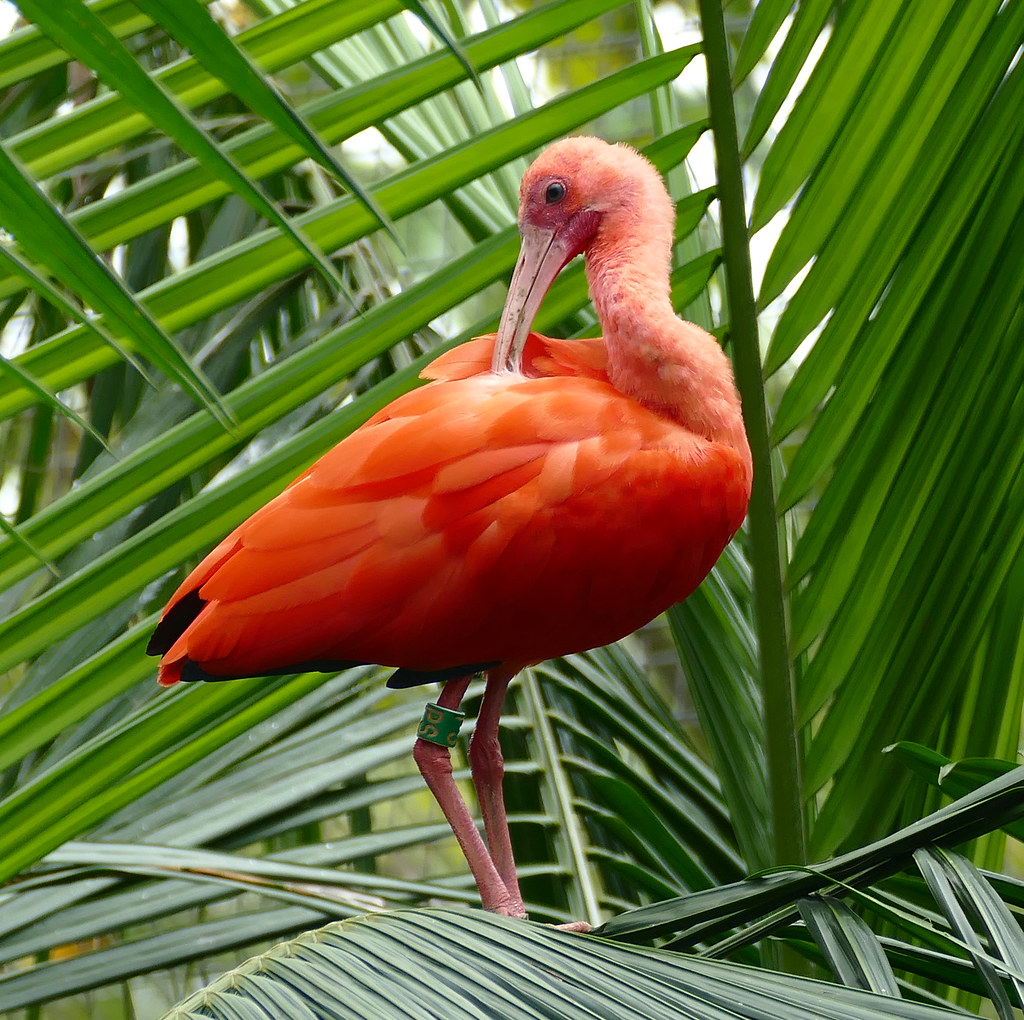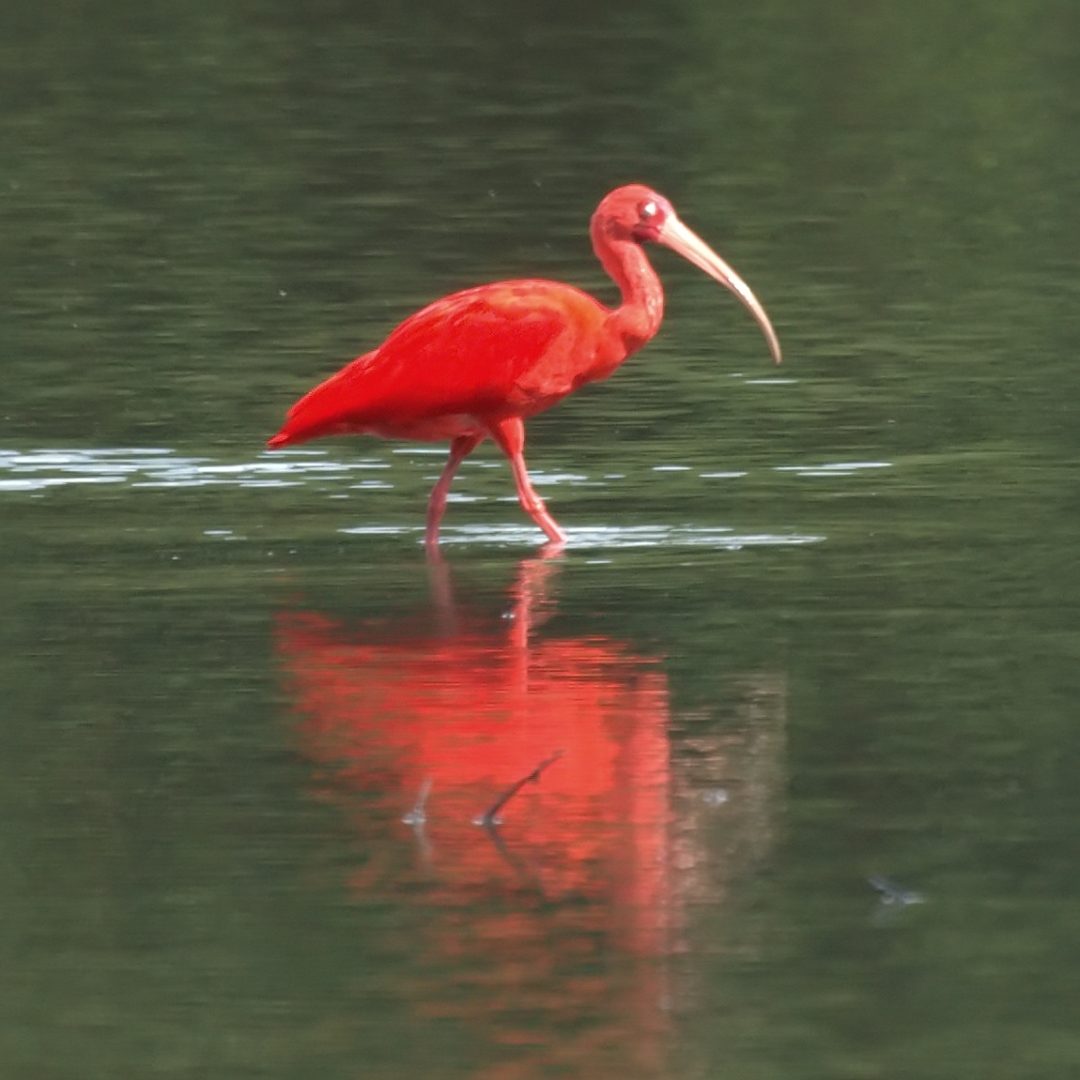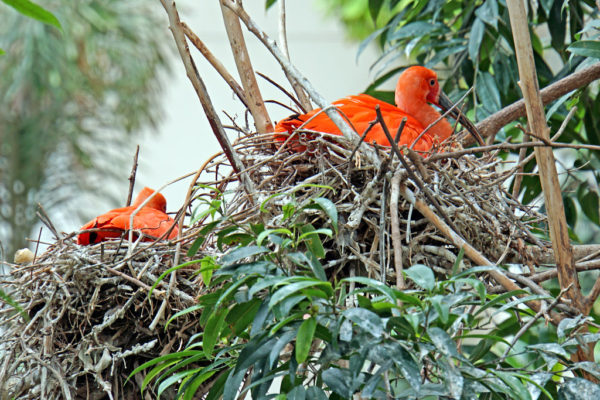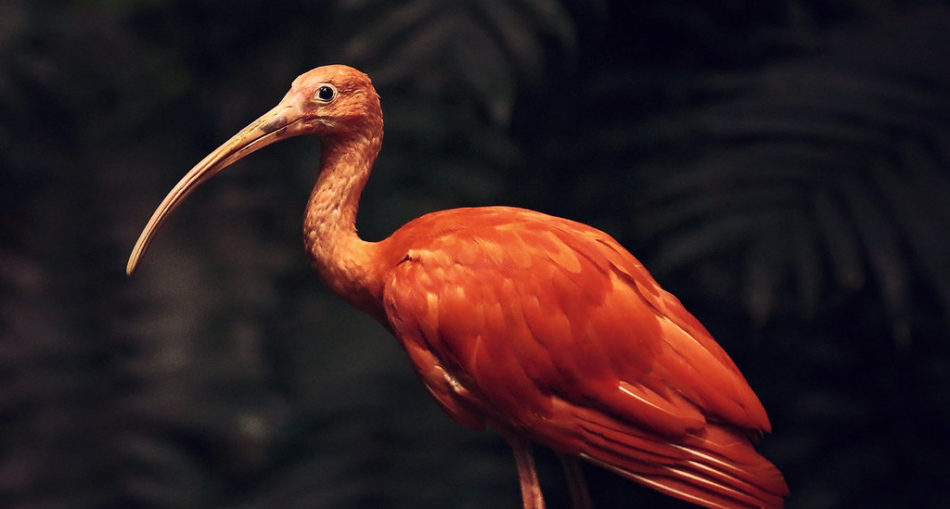
Photo of Scarlet Ibis perched on a branch. Source: https://www.flickr.com/photos/berniedup/40497380652.
Scientific Classification
- Scientific Name: Eudocimus ruber
- CommonName : Scarlet Ibis
- Kingdom: Animalia
- Order: Pelecaniformes
- Genus: Eudocimus
- Family: Threskiornithidae
These birds are quite captivating to look at. While crossing over the Demerara Harbour Bridge late into the evening you might have noticed some of these stunning creatures gliding through the air making their way to be nested by the mangroves that are abundant along the shoreline of the Demerara River but don’t mistake these birds for Flamingos, or, ‘FLAME’mingos, due to their bright, scarlet colour. Scarlet Ibis (Eudocimus ruber) is a species from the family of Ibis. The Ibises are part of a group of long-legged, wadded birds.
Description
These birds are hard to miss because their entire body is bright red with a lighter shade of red on their head. Their long legs with four, partially webbed toes are pink. Their toes have claws which help in wading through shallow water of mangrove strands. The male and female both have similar features; measuring 55cm to 76cm from tip of their tail to the tip of the bill, they have a wingspan of 52cm to 56cm. Males are usually slightly larger than females. They have a curved bill and long necks.
Habitat
Scarlet Ibis like to hunt for prey among mangrove swamps, tidal mudflats, wetlands and shallow lakes. Scarlet Ibis usually prefer tropical regions spreading across Argentina, Brazil, Colombia, Trinidad and Tobago, French Guiana, and Guyana. They can also be seen in marshy lands on the coast of Florida, North America.

Photo of Scarlet Ibis in wetlands.(Source: <https://commons.wikimedia.org/w/index.php?title=File:Scarlet_Ibis_(5535992720).jpg&oldid=617871005>.)
Communication
They are known to be quiet birds although sometimes you may hear them grunt or croak while on breeding grounds. Males can produce this honking sound whenever there is a disturbance in their nest.
Diet
These birds are aquatic feeders and mainly feed on crustaceans, shellfish, mollusks, and insects that live in the water such as water beetles and other water bugs. The synthesis of carotene contained in the crustaceans that they feed on results in the scarlet hue of the Scarlet Ibis’ feathers.
Fun Fact: The long and curved bill helps locate and get hold of the food in mud flats.
Reproduction

Photo of Scarlet Ibis on their nest. (Source: https://www.flickr.com/photos/archer10/37051799292/)
Scarlet ibis birds have a sociable and colonial breeding structure. They build their nests close together. There are multiple nests on each tree. To entice females, males will perform flights, preening, head-scratching, and rocking motions. When approaching a male, the female must exercise caution because if she leaves the male’s display area, the male may attack. The male will mate with a number of females. They return to their colonial nesting area by the middle of September. Scarlet ibis eggs hatch between November and December. 5-6 days after sexual activity, an ibis lays its first egg. A female can lay 5-6 eggs. Incubation takes between 19 and 23 days. Nestlings become self-sufficient after 75 days and leave the nest after 35 days.
If you have never caught a glimpse of these creatures before I suggest you keep an eye out whenever you’re on your way home after a long day or just taking a trip over the Demerara River. They can surely brighten up your evening!
References:
- <https://sta.uwi.edu/fst/lifesciences/sites/default/files/lifesciences/documents/ogatt/Eudocimus_ruber%20-%20Scarlet%20Ibis.pdf
- https://seaworld.org/animals/facts/birds/scarlet-ibis/
- http://exploreguyana.org/the-return-of-the-scarlet-ibis/







